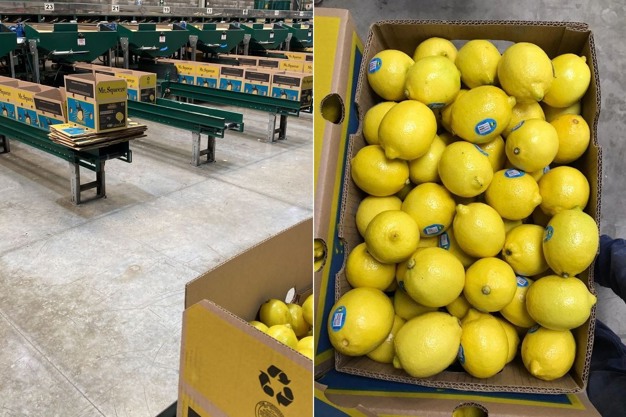While U.S. supply of lemons currently is flush with fruit, it is unknown what percentage of the lemon crop will be put in storage. This will depend on how good the quality is from the different districts and how long they can lay dormant until they can be sold. All in all, domestic supply won’t be enough to totally satisfy the demand through summer and as a result, the U.S. will need to complement domestic production with imports. However, importing may be a bit more complicated this season as in many parts of the world, production volumes have been impacted by weather.
Argentina in season
“For us, imports out of Argentina have started and the first lemons are expected to arrive late May or early June,” says Ronnie Cohen with Vision Global Group. “Argentina’s production volume is estimated to be 10 – 15 percent down compared to last season,” he added. Given California’s sizeable crop, many U.S. retailers believe there is enough domestic supply available, and they are only interested in buying lemons at low price points, which doesn’t make sense for Argentina. “Growers and packers from Argentina are very well aware of the shortages in different parts of the world and have many options to export to. As a result, they are playing the spot market instead of making commitments at unattractive prices,” Cohen shared. This will likely reduce the volume of lemons coming to the U.S. In addition, imports from Argentina are subject to a 10 percent tariff, which could make the U.S. a less preferred destination.

Shortage of volume
What could that mean for domestic availability of lemons in the coming months? “My gut is telling me that U.S. growers and packers may make commitments with retailers at more aggressive prices, resulting in a shortage of volume before the new season starts in the fall. I may be wrong, but I think domestic volume may be depleted by the end of June and into July and August,” Cohen said.
Argentina, the world’s largest lemon grower, has a favorable window of supply. With reduced production volumes worldwide, there is no other sourcing country that can satisfy the demand. “Turkey’s window crosses over, but production levels are down due to weather. We didn’t import from Spain this year and lemons from South Africa can’t come to the U.S., only to Canada.” Mexico won’t start up until August, so for the next few months, the U.S. depends on domestic production in combination with imports from Argentina. “All in all, we may see a scarcity of imported lemons into the U.S. market.”
 For more information:
For more information:
Ronnie Cohen
Vision Global Group, LLC
Tel: (+1) 917-930-7178
[email protected]
www.visionglobalgroup.com
Source: The Plantations International Agroforestry Group of Companies
